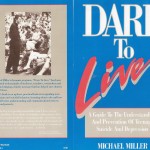I grew up being shown in Revelation a miraculous rapture or “catching away” of the Church from a worldwide tribulation seven years prior to Christ’s millennial reign. In fact I read Left Behind before any of the other books were published. But I’ve since changed my mind about how Revelation is too be understood. And I think you should too.
My transformation began for a couple of key reasons.
1. A removal of the church from the suffering of this world is a faulty inference from Scripture. The rapture is certainly scriptural. In 1 Thessalonians Paul speaks about the church being caught up in the air with him. But it gives no indication of a time other than the return of Christ. I believe the a pre-tribue rapture holds a rather faulty theological assumption that God will remove his Church from the suffering in the world. But that is not the case. God may protect his church from destruction but he does not remove his church from the sufferings of this world. He did not spare his own Son what makes us think that he will not require us to do the same. In fact revelation has the emphasis – faithfulness even to death.
2. Revelation is not just simply meant for the last generation before Christ’s return. Pre-millennial dispensationalism in which the rapture is tied to a worldwide tribulation is a rather new doctrine. It began in the mid 19th century and was widely popularized after the horrific events of World War I. The view thrives on decerning the signs of the times and equating various instances in revelation with something going on now. Alla Hal Lindsey’s Late Great Planet Earth. In which Lindsey used revelation to decode his newspaper. Such a view of Revelation sees the book as if its meant simply for the generation before Christ’s coming, which is typically understood as the readers own. But in studying Church history I discovered an amazing fact. Revelation has been read by Christians for 2,000 years. And if its to be God’s word to every generation of Christian who reads it, it can’t possibly be read the way that many Christians today are reading it.
But as a pre-tribe rapture but I’ve since changed my mind about the nature and purpose of revelation.
Revelation is structured around the worship of God before his throne.
Revelation Outline
Introduction (1:1-20)
Message to the Seven Churches (2:1-3:22)
Worship (4:1-11)
The Lamb Who Was Slain (5:1-14)
The First Six Seals (6:1-17)
The 144,000 (7:1-8)
Worship (7:9-17)
The First Six Trumpets (8:1-9:21)
Judgement Interrupted (10:1-11)
The Fate of the Two Witnesses (11:1-14)
Worship (11:15-19)
The Woman, Michael and the Dragon (12:1-18)
The Two Beasts (13:1-8)
The 144,000, judgement and the Harvest (14:1-20)
Worship (15:1-4)
The Seven Bowls of Wrath (15:5-21)
The Great Harlot (17:1-18)
Babylon’s Funeral (18:1-24)
Worship (19:1-10)
The Millennium (19:11-20:15)
The Bride, the New Jerusalem (21:1-22:5)
Epilogue (22:6-21)















